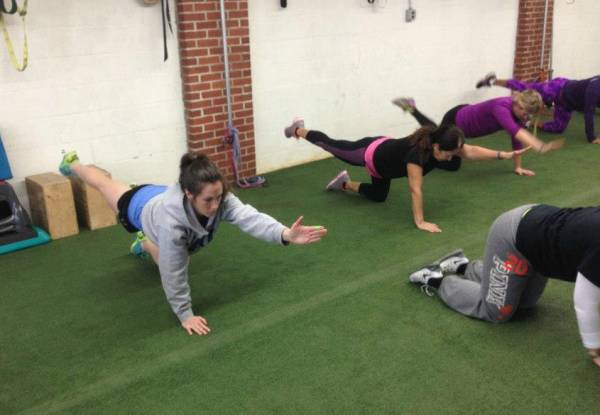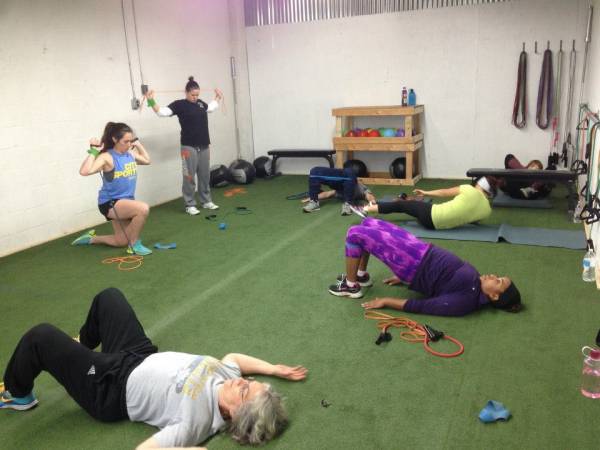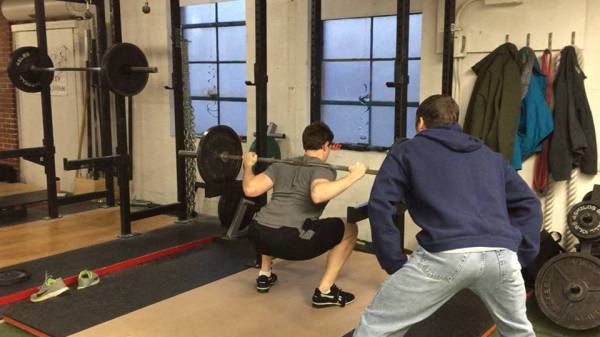Corrective exercise programs. Motor patterning. Resetting and regaining natural movement. We’ve heard it all before. Where Tae Bo and step aerobics were all the rage twenty years ago, these days it’s all about the correctives.
Corrective exercise programs. Motor patterning. Resetting and regaining natural movement. We’ve heard it all before. Where Tae Bo and step aerobics were all the rage twenty years ago, these days it’s all about the correctives.

As someone who straddles the fence with a leg in both the rehabilitation and fitness fields, I have mixed feelings about the use of correctives. So, I’m going to discuss what I think they should be for and how to implement them to manufacture superhuman athletes.
What Is a Corrective Exercise?
A corrective exercise by its simplest definition is a movement or exercise chosen to correct a specific dysfunction. This already gives us a bit of insight into how correctives should be used: specifically.
“One of the biggest misconceptions about corrective exercise is that there’s one best way to teach everyone everything.“
There are plenty of exercises that seem to have universal utility. Hip thrusts or bridges will help most people improve gluteal recruitment. Ts and Ys will frequently take snoozing mid-back muscles and snap them back to attention. Diaphragmatic breathing drills can have profound effects on a number of performance variables, including parasympathetic nervous system activity, restoring neutral posture, and improving overall abdominal function and bracing. Sometimes these things can feel like a magic bullet.
Then, sometimes, they might do nothing at all.
If a problem doesn’t exist, the corrective can’t fix it. It’s that simple. Before you start assigning corrective exercises, make sure you understand what deficits you’re trying to address and proceed from there. Just because something is popular and works for a lot of people, doesn’t mean it’s the right thing for everyone.
Correct the Cause, Not the Compensation
I was discussing pain with a colleague of mine a few days ago, and we agreed that orthopedic pain is usually a tertiary issue. The primary cause is typically a weakness or restriction, which then leads to a secondary problem of position. Usually it’s not until the poor position is utilized under load that the pain presents.
Patellofemoral pain syndrome (PFPS) is one of the most common examples of this. The more old-fashioned models of dealing with PFPS involve analyzing patellar tracking and the muscles involved (primarily the vastus medials oblique (VMO)), and then trying to improve their function. I can understand the logic that drove that model, but it’s like replacing the tires on your car when the suspension is failing. Sure, there was some abnormal wear on your tires that screwed up your car’s ability to hold the road, but replacing the tires isn’t going to solve the problem.

My experience has been that PFPS is usually the result of poor movement and loading patterns. You can hammer that poor VMO as much as you want, but you’re basically participating in physiological victim blaming. The VMO is just upset because it’s already overworked and underperforming. Forcing it to pick up even more of the slack is a strategy with an extremely low ceiling. What if you have tight calves and hamstrings that limit your knee extension as a result of poor movement? Is strengthening your VMO to keep fighting against ever-tightening antagonists really a good idea?
A better approach would be to look at the athlete as a whole and try to understand where the breakdown is coming from. Is it the hips? Is he or she lacking the glute strength to control the motion of the knees under load? Or is it higher up the chain than that? What about lower? Good doctors don’t give out medications with a shotgun approach. A good trainer needs to be just as specific with exercise prescriptions.
Less Is More
Most athletic movement dysfunctions can be addressed with a handful of simple interventions. The reason for this is twofold:
- The concept of training efficiency is valuable whether you’re rehabbing your shoulder or going for a new snatch record. Your program should be tailored and as lean as possible.
- If your specific intervention isn’t achieving the desired effect, it’s probably not because your athlete isn’t doing enough exercises. It’s more likely that your diagnosis wasn’t right or that you haven’t adequately regressed the exercise.
“Good doctors don’t give out medications with a shotgun approach. A good trainer needs to be just as specific with exercise prescriptions.“
True corrective exercises demonstrate an almost immediate effect. They may not remove the issue entirely, but you will notice a significant improvement from a single set. This is the central idea behind testing and retesting. When you only test one intervention at a time, it’s easy to identify what’s working. The more variables you add, the muddier the waters become.
If You Don’t Know Anatomy, You Can’t Give Correctives
You don’t need to participate in a semester of cadaver dissection to achieve a practical understanding of functional human anatomy. I don’t even know that you need to be able to name every single muscle in the body. But you do need a genuine understanding of what the primary movers and stabilizers are in every motion and what positions the joints need to be in for those muscles to work optimally.
If you don’t know how things are supposed to work, how can you identify what isn’t working? How can you decide what needs to be done? There are plenty of popular systems out there for understanding and analyzing movement. Many of them are useful. None of them will replace a genuine understanding of mechanics.
Position Is Power
Joint position and alignment determine muscle activation. Muscle activation determines force production. People argue about the importance of perfect technique, but on an anatomical level its significance is obvious. Corrective exercises can achieve drastically different effects by changing positions by inches.
Want an example? Stand up and flex your glutes. Now turn your feet in slightly and do it again. Feel that? How much less they turn on? All you did was alter your alignment by an inch or two and you significantly impacted your ability to activate your glutes. Position is always important in lifting. With corrective exercise, position is everything.

Movement Starts in the Mind
This has become my motto of late. I find myself saying it to my athletes and patients on a regular basis. It may sound a little corny or esoteric, but I believe it’s one of the most important concepts for people to understand.
When you have your athlete perform a corrective, why are they doing it? Are they doing leg raises to get better at raising their leg? Or are they doing it to improve the activation of a specific muscle? Focusing on the muscle activation rather than the movement can produce staggeringly different results.
There Are Many Paths Up the Mountain
One of the biggest misconceptions about corrective exercise is that there’s one best way to teach everyone everything. There are certainly some time-tested standards, but with seven billion bodies on the planet, it’s safe to assume they won’t all respond in the same way. But as long as you approach the problem scientifically and choose interventions for the right reasons, it really doesn’t matter if Gray Cook or Kelly Starrett wouldn’t have done it that way.
“Muscle activation determines force production. People argue about the importance of perfect technique, but on an anatomical level its significance is obvious.“
Just be careful that you’re not using this perspective to justify questionable methods. There are plenty of approaches that fall within the range of correct. There’s even more stuff that is objectively wrong.
Following these guidelines should help you create better, leaner, more targeted correctives. Now get out there and help somebody.
Check out these related articles:
- Beyond the FMS: How to Design Powerful Corrective Exercises
- Why Screening and Correctives Should Be the Foundation of Every Program
- Good Movement Is Corrective: Why the Squat Might Be Better Than Screening
- What’s New On Breaking Muscle Today
Photos courtesy of Emily Socolinky at Five x 3 Training.






